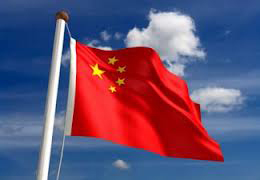China gingerly raised a key short-term interest rate on Thursday following the US Federal Reserve Bank’s move overnight, in a symbolic reminder that Beijing is keeping an eye on global market trends even as it cracks down on financial risks at home, according Reuters.
The People’s Bank of China (PBOC) said it had increased the interest rate on 7-day reverse repurchase agreements, or reverse repos, used to control liquidity in the banking system, by 5 basis points (bps).
The Fed raised US interest rates by 25 bps, or a quarter of a percentage point, on Wednesday and forecast at least two more hikes for 2018.
The PBOC’s move on Thursday had been widely expected and was the central bank’s first major policy decision under new Governor Yi Gang, who was appointed by parliament on Monday as part of a sweeping reshuffle of China’s cabinet under ever-stronger President Xi Jinping.
“I think it’s just a symbolic rate hike again to avoid the China-US rate spread from widening too much,” said Ken Cheung, senior FX strategist at Mizuho Bank in Hong Kong.
“A 5 bps hike is enough because yuan depreciation is not a big concern. And the PBOC is refraining from lifting rates aggressively amid the regulation reform and benign inflation pressure.”
The 7-day reverse repo rate was raised to 2.55 percent from 2.50 percent, while the PBOC injected 10 billion yuan ($1.58 billion) into the financial system, the central bank said in a statement.
Many market watchers had expected the PBOC to follow a Fed hike with a more modest 5-10 bps increase in the borrowing cost for Chinese interbank loans.
While that would keep the US-China rate differential from getting too wide — which would risk a resurgence in capital outflows from China — analysts said the move was also a reminder to banks and other financial institutions that the government is pressing ahead this year with its campaign to reduce risks in the financial system.
The PBOC had similarly raised rates on its open market operations and medium-term lending facility by 5 bps after the Fed last increased its policy rate by 25 bps in December.
It began nudging up short-term rates in early 2017 as authorities’ clampdown on riskier financing practices kicked into higher gear, but it has moved cautiously to avoid a hit to the economy.
Yi, a former vice governor of the PBOC, took the helm from long-serving governor Zhou Xiaochuan in a personnel move during parliament that analysts said signaled policy continuity.
Yi told reporters during the annual session of parliament, which concluded on Tuesday, that real economic conditions would determine whether China would raise rates or not.
With global markets expecting further monetary tightening in the United States, economists think China will follow suit with further increases of its market rates, although there is no clear consensus on how high rates may go.
Nie Wen, an economist at Hwabao Trust in Shanghai, expected the PBOC to raise market rates by a total of 25 bps this year, or possibly as much as 50 bps if consumer inflation in China rises above 3 percent.
Economists at ANZ expect an upside of 40 bps in the seven-day reverse repo rate this year.
However, most of the official focus this year is expected to be on a continued tightening of the regulatory screws, with a flurry of measures already announced in the last few months.
Some market watchers also expect the PBOC to start moving benchmark rates again, but said the move would be asymmetric, with only the deposit rate rising to haul negative real deposit rates above the water line.
The PBOC has not changed its benchmark one-year lending and deposit rates since October 2015, with the central bank preferring to guide borrowing costs via liquidity operations and interbank market rates.
Capital Economics, however, believes there is a risk the government could u-turn on its risk campaign and start to ease policy if economic growth is in danger of slowing more than expected.
Analysts polled by Reuters expect China’s GDP growth to slow to 6.5 percent this year from 6.9 percent in 2017, pressured by higher borrowing costs and cooling investment in the property market. That would be in line with the government’s 2018 target.






